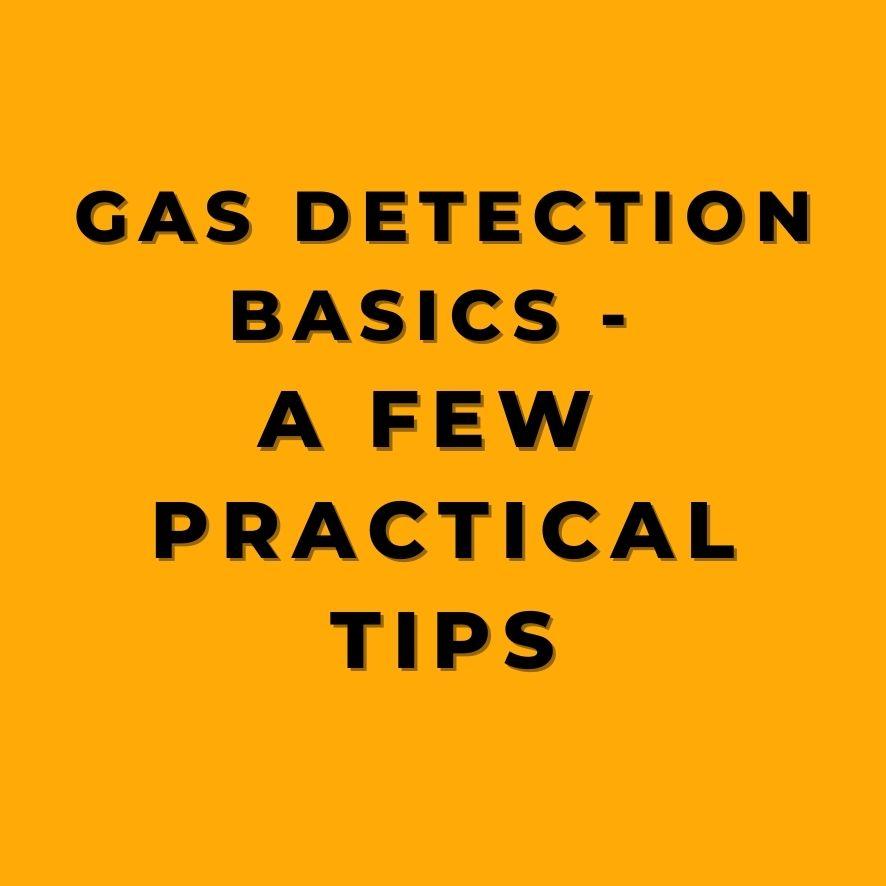Gases can be dangerous if not properly handled and that’s why it’s essential to be aware of the permissible exposure limits (PELs) for each gas. In the United States alone, according to the Bureau of Labor Statistics, there were over 12,000 serious injuries and fatalities related to exposure to harmful substances in the workplace in 2019. It’s important to be aware of the different types of PELs such as Time-weighted average (TWA), Short-term exposure limit (STEL), Permissible exposure limit (PEL), Workplace environmental exposure level (WEEL) and Immediately dangerous to life and health (IDLH) to ensure the safety of workers who are exposed to gases.
In this article, I’ll be discussing what Permissible Exposure Limits (PELs) are, how they’re measured, and what they mean for your safety. It’s important to understand the different types of PELs, to have the proper gas detection equipment in place, properly calibrate and maintain the equipment, understand what the PELs mean for your safety, understand the different hazards associated with different gases, consider the location of the gas detection, regularly monitor and record your readings, and follow proper safety procedures.
It’s crucial to be aware of the dangers associated with gases and to take the necessary precautions to protect workers from the harmful effects of exposure. By taking the time to understand PELs, choosing the right gas detection equipment, and following proper safety procedures, you can reduce the risk of accidents and keep your workers safe. It’s important to take the necessary steps to ensure the safety of workers and to consider the potential risks associated with working with gases. By keeping these tips in mind, you can stay safe while working with gases.
- Understand the different types of PELs: Time-weighted average (TWA) is the average exposure to a gas over a specific period of time. It’s important to be aware of the TWA PELs for the gases that are present in your workplace and to monitor them regularly to ensure that they are not exceeded. Short-term exposure limit (STEL) is the maximum exposure to a gas over a short period of time. This is important to consider when working in environments where the concentration of gases can change rapidly. Permissible exposure limit (PEL) is the maximum exposure to a gas over a long period of time. This is important to consider when working in environments where the concentration of gases is consistently high. Workplace environmental exposure level (WEEL) is a recommended exposure limit for a gas in the workplace. It’s important to be aware of the WEEL PELs for the gases that are present in your workplace and to monitor them regularly to ensure that they are not exceeded. Immediately dangerous to life and health (IDLH) is the level of a gas at which it would be immediately dangerous to life and health. This is important to consider when working in environments where the concentration of gases can rapidly become dangerous.
- Have the proper gas detection equipment in place: There are many different types of gas detection equipment available, including portable gas detectors, fixed gas detectors, and wireless gas detection systems. Each type of equipment has its own set of advantages and disadvantages, so it’s important to choose the right one for your specific needs. For example, portable gas detectors are ideal for workers who move around frequently and need to be able to detect gases in different locations. Fixed gas detectors are ideal for environments where the concentration of gases is consistently high. Wireless gas detection systems are ideal for environments where it’s difficult to run cables or where workers need to be able to detect gases from a distance.
- Properly calibrate and maintain your gas detection equipment: It’s important to regularly check the batteries, sensors, and alarms to make sure that they’re functioning properly. Additionally, make sure that you’re following the manufacturer’s instructions for use and that you’re properly trained on how to use the equipment.
- Understand what the PELs mean for your safety: The PELs are designed to protect workers from the harmful effects of exposure to gases. If the PELs are exceeded, it could mean that the gas levels in your workplace are too high and that immediate action is needed to reduce the exposure.
- Understand the different hazards associated with different gases: For example, carbon monoxide is a toxic gas that can be fatal if inhaled in large amounts. It’s important to be aware of the PELs for carbon monoxide and to have proper detection equipment in place to monitor for it. Similarly, hydrogen sulfide is a flammable gas that can cause serious respiratory problems if inhaled in large amounts. It’s important to be aware of the PELs for hydrogen sulfide and to have proper detection equipment in place to monitor for it.
- Consider the location of the gas detection: In confined spaces, the concentration of gases can be much higher, which makes it crucial to have proper detection equipment in place. Additionally, it’s important to conduct regular air quality tests to make sure that the space is safe to enter. Confined spaces are dangerous because they can contain a high concentration of gases, which can be harmful or even fatal. It’s important to have proper detection equipment in place, such as personal gas monitors, to ensure that workers are safe. Additionally, it’s important to conduct regular air quality tests to make sure that the space is safe to enter.
- Regularly monitor and record your readings: It’s important to regularly monitor and record your gas detection readings to ensure that the PELs are not exceeded. This will allow you to quickly identify any potential hazards and take action to reduce exposure. Additionally, it’s a good idea to keep records of your gas detection readings to demonstrate compliance with safety regulations.
- Follow proper safety procedures: It’s important to follow proper safety procedures when working with gases. This includes wearing the appropriate personal protective equipment (PPE), such as respirators and protective clothing, and following the manufacturer’s instructions for use of gas detection equipment. Additionally, it’s important to be aware of the emergency procedures in case of an accident or exposure to dangerous gases.
In conclusion, gas detection is essential for ensuring the safety of workers who are exposed to gases. Properly understanding the permissible exposure limits (PELs) and having the right gas detection equipment in place can help prevent accidents and protect workers from the harmful effects of exposure to gases. It’s important to understand the different types of PELs, ensure that your equipment is properly calibrated and maintained, understand the hazards associated with different gases, consider the location of the gas detection, regularly monitor and record your readings, and follow proper safety procedures. By following these tips, you can stay safe while working with gases.


